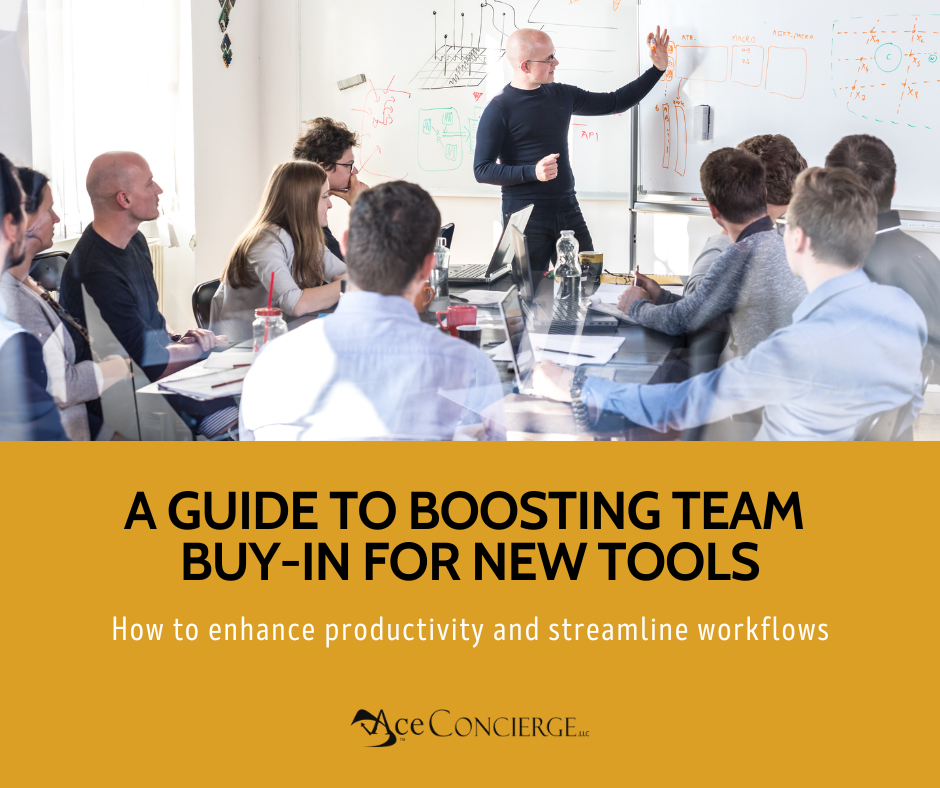Introducing new tools and technologies is a constant in today’s workplace. However, successfully adopting these tools often depends on how well employees are educated, which is crucial for gaining team buy-in and boosting efficiency.
The Importance of Education for New Tools
The primary reason for introducing new technology is to enhance productivity and streamline workflows. However, employees who are not adequately trained may resist change, leading to decreased morale and productivity. Educating employees empowers them to use the tools effectively and fosters a culture of continuous improvement and adaptability.
- Boosts Confidence and Competence: Employees who are well-informed about new tools feel more confident and capable in their jobs. This newfound confidence leads to greater efficiency, allowing them to complete their tasks more quickly and accurately.
- Reduces Resistance to Change: Much resistance to change comes from a fear of the unknown. Thorough education, clear instructions, and demonstrations of the new tech stack, real benefits can alleviate these fears, making the transition smoother.
- Maximizes ROI: Companies put a lot of resources into acquiring new tools. Ensuring that employees are adequately educated on using these tools allows them to be utilized to their fullest potential, maximizing the return on investment.
Common Pain Points
Even with the best intentions, educating employees on new tools can face several challenges.
- Information Overload: Employees might feel inundated by the volume of new information they need to take in, which can lead to disengagement.
- Lack of Personalization: A generic approach to training can fall short. Different team members possess varying levels of technical skills and learning styles.
- Insufficient Follow-Up: Initial training sessions often aren’t enough. Employees may forget what they’ve learned without ongoing support and reinforcement and revert to old habits.
- Technical Difficulties: New tools can introduce their technical challenges. Without proper troubleshooting assistance, employees may encounter issues that disrupt their workflow.
- Resistance to Change: Employees might resist new tools due to fear of the unknown or prefer established processes. This resistance can significantly hinder successful tool adoption.
- Lack of Understanding: Without adequate training, employees may find it difficult to use new tools effectively, resulting in frustration and reduced productivity.
Strategies for Educating Employees
To tackle these challenges and ensure a smooth implementation, consider the following strategies:
- Conduct a Needs Assessment: Before introducing a new tool, it’s essential to assess the current challenges and determine how the new tool can help. This will allow you to customize the education process to address specific needs.
- Engage Leadership: It is essential to gain support from leadership. When leaders actively participate in the training and commit to the new tools, they set a positive example for the rest of the team.
- Develop Comprehensive Training Programs: Design detailed yet easy-to-understand training programs. Use various formats, such as workshops, webinars, video tutorials, and written guides, to accommodate different learning preferences.
- Incorporate Hands-On Practice: Provide employees with the opportunity to practice using the new tools in a safe environment. This practical experience can significantly improve their understanding and retention.
- Provide Ongoing Support: Create a support system for employees to seek assistance. This could involve a dedicated helpdesk, regular Q&A sessions, and access to a knowledge base.
- Gather Feedback and Iterate: Solicit employee feedback regarding the training process and the usability of the new tech platforms. Use this input to make necessary adjustments and enhancements.
- Celebrate Milestones and Successes: Recognize when teams adopt and use new tools. This not only boosts morale but also reinforces the importance of the new tools.
Teaching employees about new tools goes beyond simply sharing information; it’s about creating an environment that values learning and flexibility. By tackling common challenges and adopting effective training methods, companies can help their teams become skilled in using new tools and excited about what they can achieve. This approach boosts efficiency, enhances morale, and cultivates a more adaptable and resilient workforce. It’s important to remember that the foundation of successful tool adoption is ongoing education, support, and recognition of achievements.


0 Comments